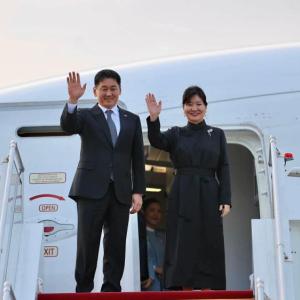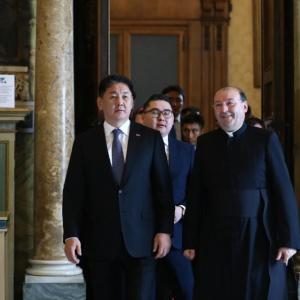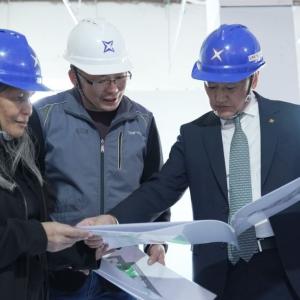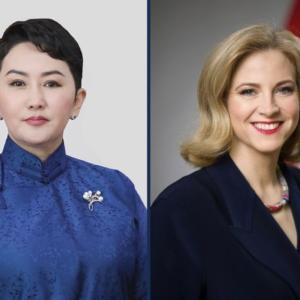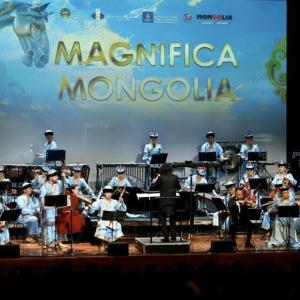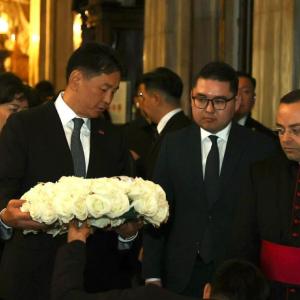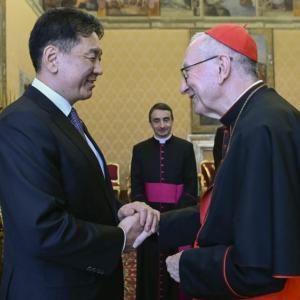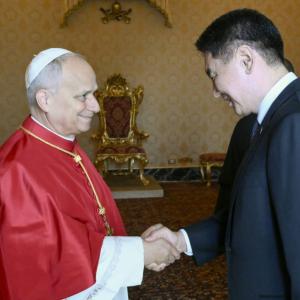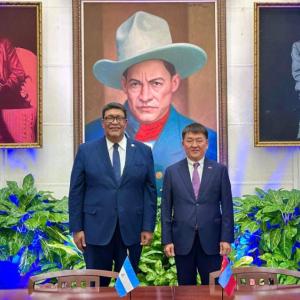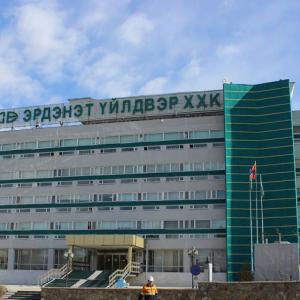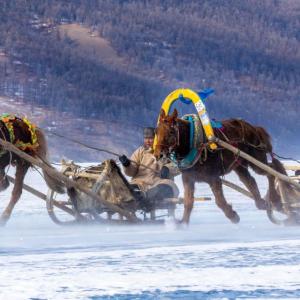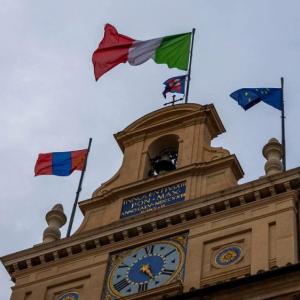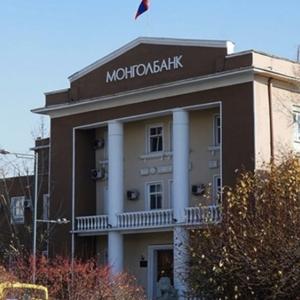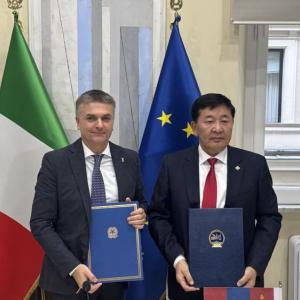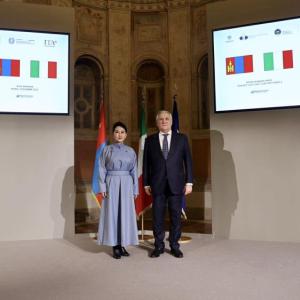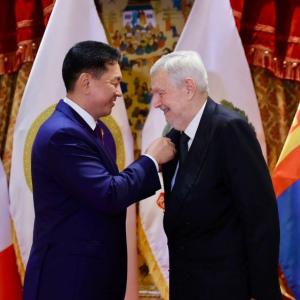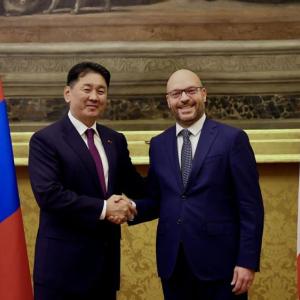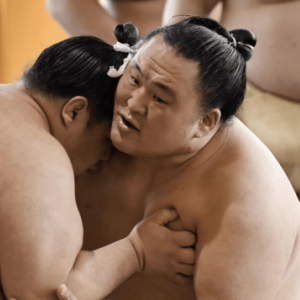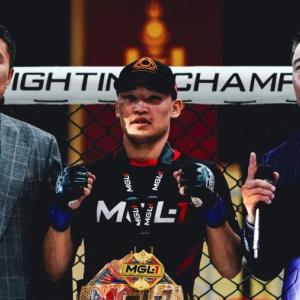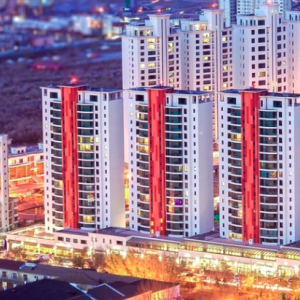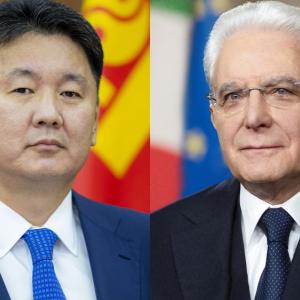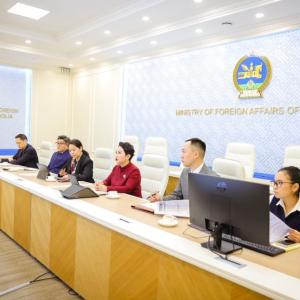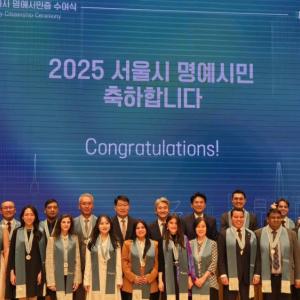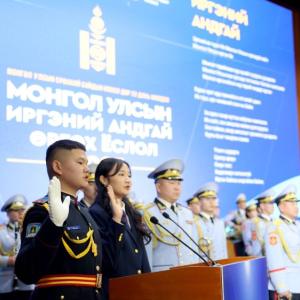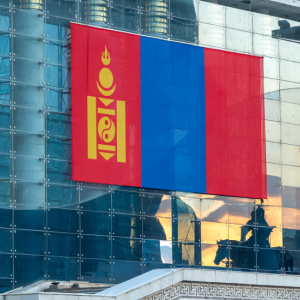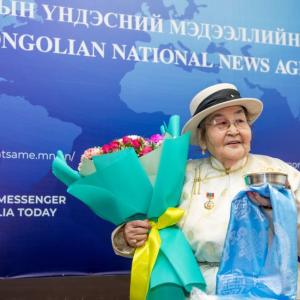Oyun-Erdene Tsedenpil: the Reproduction of “Ikh Khuree City” Painting was Created Over Five Years to Highlight Its Value
Art & Culture
Ulaanbaatar, March 19, 2025 /MONTSAME/. The Exhibition “Mongol Painting Depicting Bogd’s Khuree City,” dedicated to the Great Commemoration Day of the Undur Gegeen, was inaugurated at the Zuun Khuree Dashchoilin Monastery on March 13, 2025.
This special exhibition was previously displayed at the Mongol Art Gallery on February 7-27, 2025. As of today, it has been re-exhibited in honor of the Great Commemoration Day of the Undur Gegeen. The Exhibition features approximately 30 works, including Mongolian paintings and photographs depicting Bogd’s Khuree City. Among them, the most notable piece is a reproduction of the “Ikh Khuree City” painting, originally created in the 1870s by the court painter of Bogd Khaan. This reproduction took five years to paint by Mongol Art Gallery Artist Oyun-Erdene Tsedenpil.
During the Exhibition, we had the pleasure of having a brief conversation with Artist Oyun-Erdene Tsedenpil.
What inspired you to replicate the “Ikh Khuree City” painting?
My artistic focus is on Mongol paintings, particularly themes related to history and religion. Before replicating the Ikh Khuree City painting, I spent four years creating works such as “Erdenezuu,” which illustrates the Tsam and Maitreya ceremonies and the way of life of that era. In 2017, I began replicating this painting, which was left behind by an unknown artist. However, before starting the actual work, I conducted three years of research to fully understand what I was painting. During this time, I worked alongside G. Ochbayar, a researcher at the Ulaanbaatar City Museum, to gain deeper insights. Our research confirmed that this painting was commissioned by Bogd Khaan’s decree in the 1870s and holds historical significance as it vividly portrays the social, religious, and cultural life of that period. Recognizing its value, I devoted five years to bringing its significance to light in the present day.
What does the painting depict?
Mongol paintings are unique for their panoramic perspective. At the center of the composition, the painting prominently features the Zuun Khuree Monastery, where monks resided, as well as Gandantegchinlen Monastery, also known as Baruun Khuree. Additionally, it depicts the Baruun Damnuurchin, Bogd’s White Palace, Dambadarjaa Monastery, Ikh Zeel, Manchu Amban, and the General Consulate of the Russian Federation. What makes this painting especially significant is that it is the earliest known depiction of Bogd’s Khuree City in such detail. Moreover, it is the only painting that meticulously illustrates the ceremony of Bogd Javzandamba being enthroned at Gandantegchinlen Monastery while adorned with the Semberem crown.
What are the distinctive features of this painting, and did you face any challenges during the process?
Since the original painting is over 150 years old, many of its details were extremely tiny, faded, or even lost, which made the replication process challenging. One major difficulty was the use of traditional mineral pigments, which required a significant amount of time and effort. However, I adhered to authentic thangka painting techniques, using mineral-based pigments on a prepared canvas, just as the original artist did. Instead of using modern bright colors, I carefully preserved the aged aesthetic of the original artwork. The white hues in the Ikh Khuree City painting varied due to natural aging over time, appearing yellowish, antique, or with cool undertones. To maintain this authenticity, I meticulously used three different shades of white to match the original tones. Additionally, the intricate detailing posed challenges, especially in rendering Chinatown, where the fine brushwork was exceptionally delicate. Despite these difficulties, I remained committed to ensuring that the replication preserved the historical and artistic integrity of the original work.
What are your future artistic plans?
Through this replication process, I have gained profound knowledge of Mongol painting traditions, artistic techniques, and historical aesthetics. I believe I have absorbed the essence of 150-year-old Mongolian artistic styles. Building upon this experience, I plan to incorporate Mongolia’s historical and cultural heritage into my future works. Furthermore, I am preparing to publish a book and catalog featuring the Ikh Khuree City painting.





 Ulaanbaatar
Ulaanbaatar





